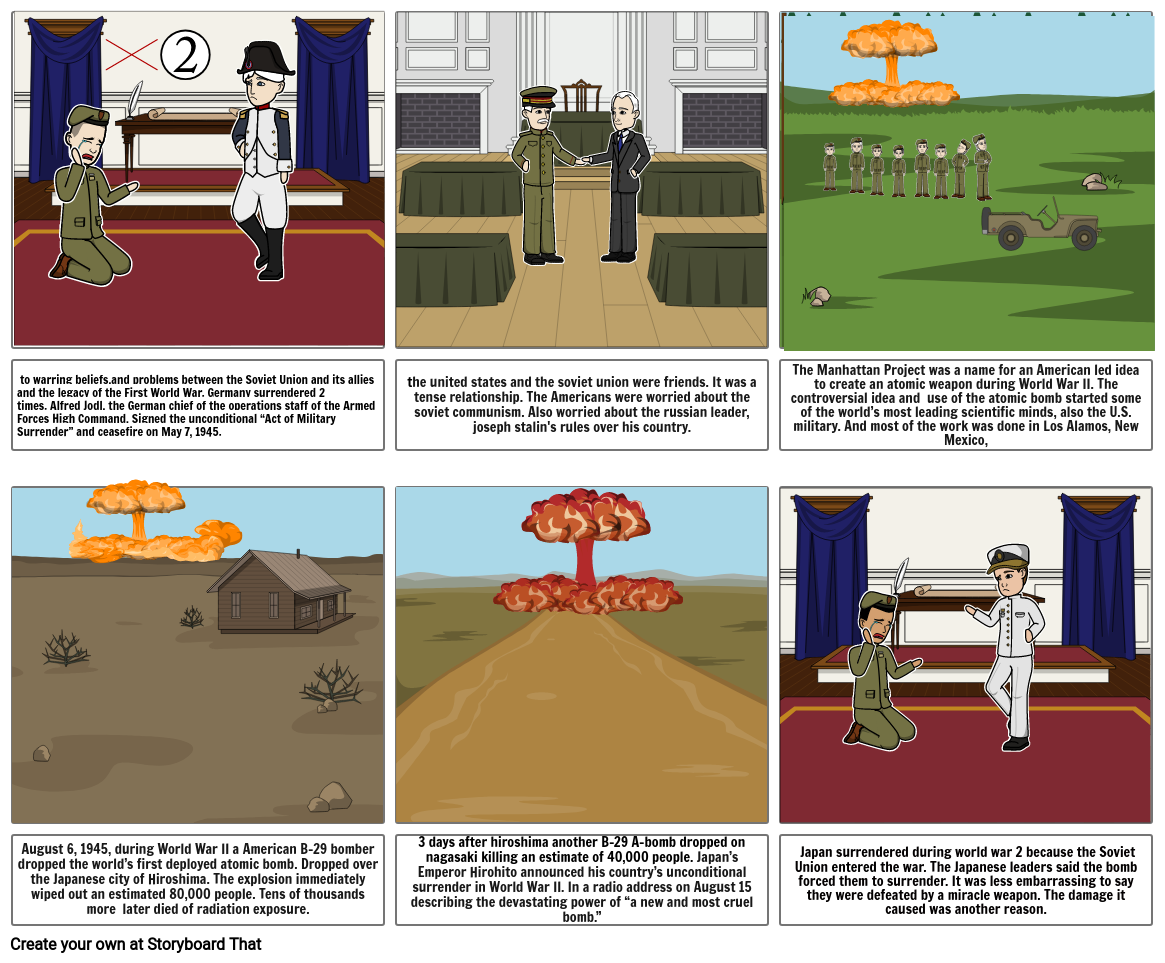Outcomes of ww11

Storyboard Text
- to warring beliefs,and problems between the Soviet Union and its allies and the legacy of the First World War. Germany surrendered 2 times. Alfred Jodl, the German chief of the operations staff of the Armed Forces High Command, Signed the unconditional “Act of Military Surrender” and ceasefire on May 7, 1945.
- the united states and the soviet union were friends. It was a tense relationship. The Americans were worried about the soviet communism. Also worried about the russian leader, joseph stalin's rules over his country.
- The Manhattan Project was a name for an American led idea to create an atomic weapon during World War II. The controversial idea and use of the atomic bomb started some of the world’s most leading scientific minds, also the U.S. military. And most of the work was done in Los Alamos, New Mexico,
- August 6, 1945, during World War II a American B-29 bomber dropped the world’s first deployed atomic bomb. Dropped over the Japanese city of Hiroshima. The explosion immediately wiped out an estimated 80,000 people. Tens of thousands more later died of radiation exposure.
- 3 days after hiroshima another B-29 A-bomb dropped on nagasaki killing an estimate of 40,000 people. Japan’s Emperor Hirohito announced his country’s unconditional surrender in World War II. In a radio address on August 15 describing the devastating power of “a new and most cruel bomb.”
- Japan surrendered during world war 2 because the Soviet Union entered the war. The Japanese leaders said the bomb forced them to surrender. It was less embarrassing to say they were defeated by a miracle weapon. The damage it caused was another reason.
Over 30 Million Storyboards Created

